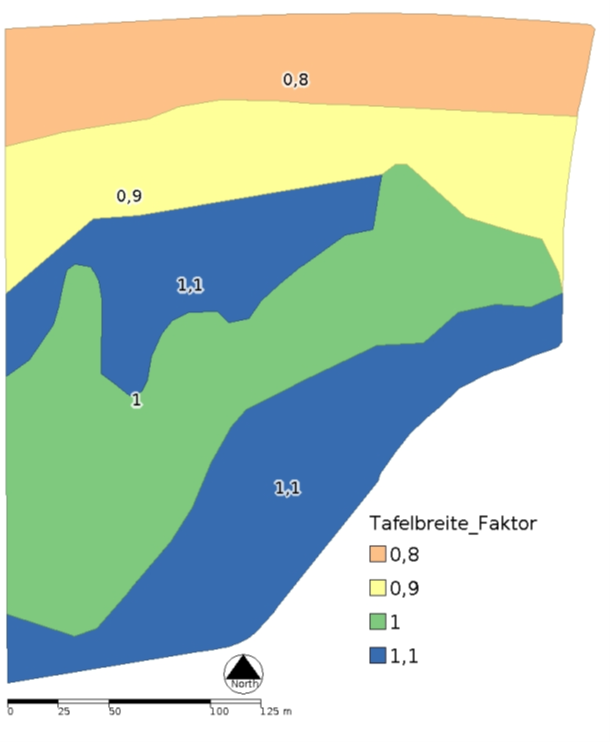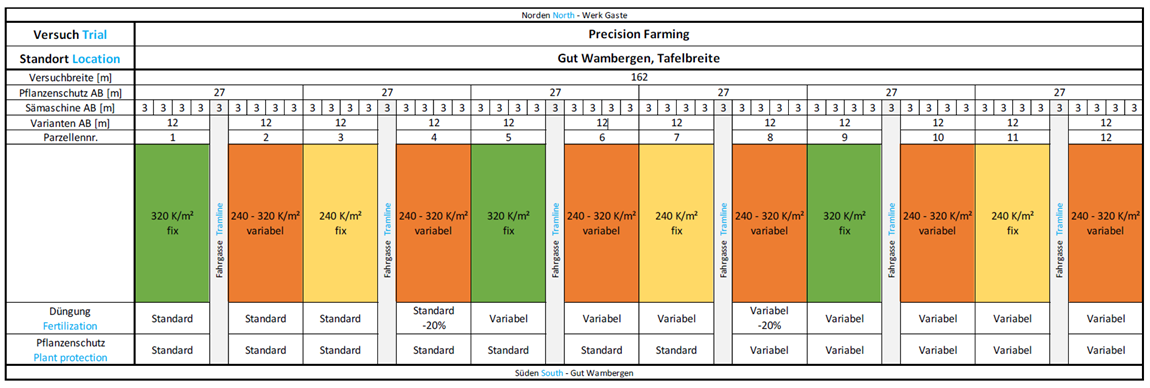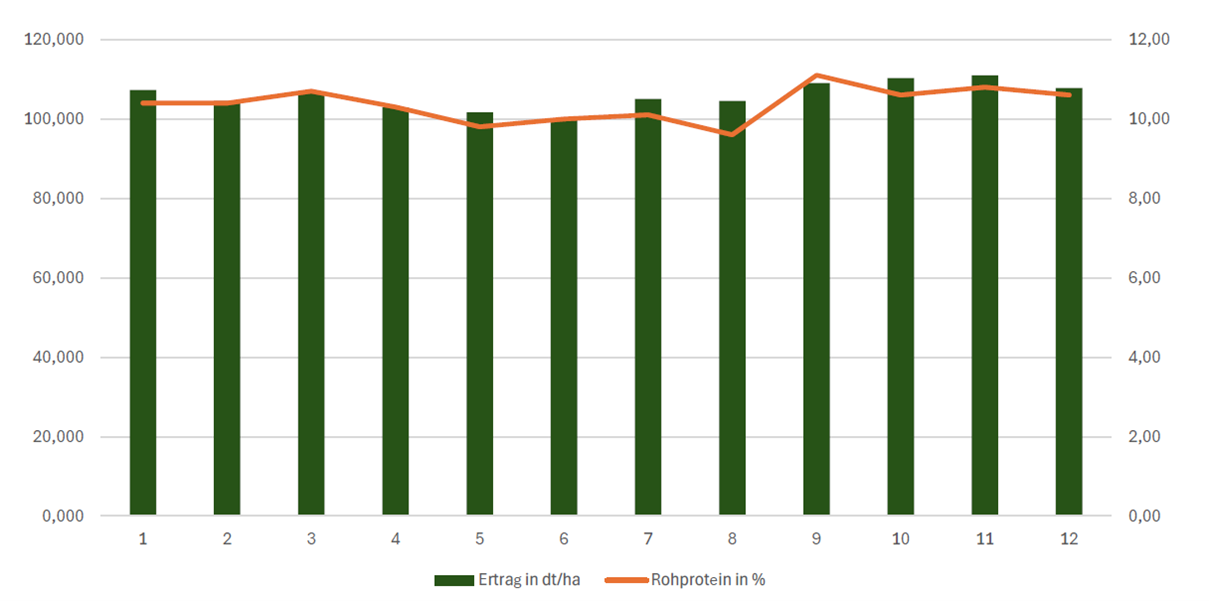Precision Farming: Is the location-dependent use of inputs worthwhile?
In short: There were no discernible differences with respect to yield or quality in part-area, site-specific cultivation under the prevailing conditions – sufficient water over the entire growing season, sufficient amount of nutrients available, high disease pressure. Only a slight tendency for variable fertilisation and crop protection applications to generate improved results was apparent.
In this trial, we considered the question as to whether it is beneficial to manage wheat according to the soil properties and to use Precision Farming on a heterogeneous site for this purpose.
Trial design
We used the "Tafelbreite" field at the Wambergen site for this trial. The preceding crop was winter rape. A factor map served as the basis for all fertilisation and crop protection applications, based on soil differences such as the rooting depth, soil evaluation or conductivity.
The variety KWS Keitum was sown on 7 October 2023 using the Centaya Super 3000 + rotary cultivator at various rates from 240 seeds/m² and 320 seeds/m² fixed to 240–320 seeds/m² variable. Fertilisation (ZA-V 4200) and crop protection (UX 5201 Super/UF 2002 + FT1001) were provided either at standard quantities or variably adapted to the soil conditions. Furthermore, two part-areas were managed with a reduced application of fertiliser.
It should be noted that very high precipitation was recorded over the entire growing season, and it was a challenge to establish the crop as a result of the extremely wet conditions present during sowing.
What was the focus of our investigations?
We wished to find out whether part-area, site-specific cultivation offers advantages in terms of the yield. Furthermore, we examined whether and how the crop reacts to part-area, site-specific fertilisation and the part-area, site-specific growth regulation application. Thirdly, we addressed the question as to whether tailored cultivation reduces the use of inputs.
What happened in the field?
No significant differences in terms of ears/m² or weed pressure were seen in the crop development. The part-area, site-specific use of a growth regulator had no impact on the plant length or the disease pressure. It should be mentioned here that the choice of variety worked in our favour; the plants struggled much more with diseases in the CRF trial with a different wheat variety.
What about the yield?
All the yield levels were similar and very high for the region. In addition, no appreciable differences were determined in the crude protein content. It can be clearly stated that part-area, site-specific cultivation had no impact on the yield or quality. The various sowing rates are also not reflected in the yield, and the fertiliser reduction of 20 % on two of the plots had no effect on the yield or quality.
On the basis of the present results, we decided not to continue the trial. Instead the focus will be on other questions in the current cultivation year.


